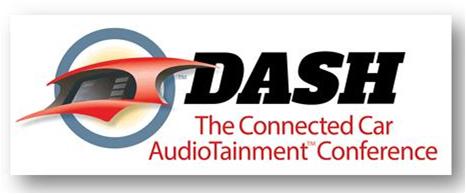When you think of Intel, what comes to mind?
Maybe you think of that ubiquitous four-tone signature they always used in their ads or the stickers on your PCs reminding you they’re “inside.” I think of their former CEO Andy Grove who had that amazing run with the company during the late ‘80s through most of the ‘90s. He was a visible leader who led the charge as the company was building its great reputation for semiconductors, microprocessors, and the “guts” that made our computers go.
 But you probably don’t associate Intel with anthropology, and specifically, ethnography. But they should because Intel has a huge team of researchers under the leadership of cultural anthropologist Genevieve Bell and they’re in the process of investigating human behavior.
But you probably don’t associate Intel with anthropology, and specifically, ethnography. But they should because Intel has a huge team of researchers under the leadership of cultural anthropologist Genevieve Bell and they’re in the process of investigating human behavior.
And what’s Bell up to? It turns out the UX – or User Experience – is key to informing the rest of the company about how consumers use technology. And right now a focal point for Bell’s team is the “connected car” as she tells The New York Times.
At the heart of Intel’s research is observing people to better understand how they interface with their cars when it comes to media, gadgetry, and technology. As many of you know, our company is no stranger to ethnography, having conducted “The Bedroom Project” and “Goin’ Mobile” for Arbitron a few years ago. We invaded young people’s dorms, apartments, and homes for the former, and followed around a bunch of smartphone owners for the latter. It was all about being in their environment and observing and understanding their media behavior.
So, too, with Dr. Bell’s team. And their research extends to literally searching through consumers’ vehicles for any gadgets, devices, and media – DVDs, CDs, headphones, and of course, a lot of personal items.
By understanding how people actually use all these “extras” they drive around with, the Intel researchers better understand whether they use built-in technology (voice commands, embedded modems, etc.) or simply rely on the gadgets they bring along for the ride.
For Intel, a takeaway is about the need to make the technology that is baked into cars more intuitive, seamless, and simple so drivers don’t just grab their phones, iPods, and ignore what the OEMs have designed. We continue to hear the OEMs talk about how their systems have to be seamless, simple, and clear in order for consumers to feel comfortable and confident using them.
It’s another reminder of why the “connected car” space – so near and dear to radio – is still very much in the formative stages of development. As we continue to attend automotive and telematics conferences, taking in the debates and conversation, it is clear that this space is up for grabs. There are virtually no industry standards and each automaker is seemingly trying to solve the problem independently – much like high school students independently competing in the science fair.
 That’s another reason why DASH will happen again, this October 15-16 in Detroit. We are committed to bringing the radio industry and the automotive community together to learn from each other, share ideas, and forge partnerships. Based on the many early sign-ups, radio has gotten the message.
That’s another reason why DASH will happen again, this October 15-16 in Detroit. We are committed to bringing the radio industry and the automotive community together to learn from each other, share ideas, and forge partnerships. Based on the many early sign-ups, radio has gotten the message.
Ultimately, broadcasters will survive or thrive based on the quality of their stations’ content and the strength of their brands. But gaining a clearer understanding of the ecosystem where the majority of consumption takes place as well as the massive dollars involved that often lead to automotive ranking first in radio sales is what DASH is all about.
Broadcasters need a mobile strategy. They need to engage with automakers and suppliers to ensure their place and utility in the cars of the future. As radio consumption – especially among young people – increasingly gravitates to the road, radio’s strategic focus needs to address this reality – and this opportunity.
We’re all on a learning curve, and the companies that stay ahead of it – from Ford to Intel on the one hand, and enlightened media companies on the other – are the ones that will reap the greatest benefits at the end of the road.
You can learn more about DASH here.
Thanks to Saga’s Steve Goldstein for the heads-up on this article.
- What To Do If Your Radio Station Goes Through A Midlife Crisis - April 25, 2025
- A 2020 Lesson?It Could All Be Gone In A Flash - April 24, 2025
- How AI Can Give Radio Personalities More…PERSONALITY - April 23, 2025




Intel’s commitment to optimizing the user experience creates a stark contrast to radio’s treatment of the same issue. It would be interesting if Intel’s CEO took the reigns of a radio company while a radio CEO took over Intel.
The UX is critically important, and Intel is wise to attack it, study it, and learn from it. Maybe radio could use an anthropologist. Thanks, Bob.